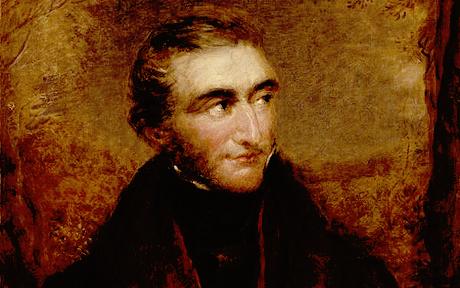Follow the journey of JMW Turner from modest beginnings to artistic phenomenon in this detailed biography of his life and career.
Joseph Mallord William Turner was the British star of the Romanticist art movement, producing powerful landscape paintings from the late 18th century through to the mid 19th century. Turner remains a much celebrated artist in his native UK and his finest work holds prominent positions amongst the nation's galleries and art museums. This biography tracks his route to stardom. The artist's skills extended to oil painting, watercolours, print making and as a draughtsman which served as a basis for everything else.
Impressionism is believed to have been inspired by the developments made by Turner, and artists of his ilk, and from that movement came all the modern art which we have enjoyed since the start of the 20th century. Essentially, Turner helped to set us off on a path from traditional historical art from the Renaissance and Baroque periods up to the abstract and expressionists like Jackson Pollock, Pablo Picasso and Joan Miro. See also related French Romanticists such as Eugene Delacroix and Theodore Gericault. Born on the 23rd of April, 1775 in Maiden Lane, Covent Garden, London, England, Joseph Mallord William would never leave such a legacy without becoming a controversial figure along the way.
Early Life of William Turner
Unlike the majority of fine artists in the centuries before and since his own career, William came from a fairly modest upbringing, his father (also William) was a barber and wig maker. His mother, Mary, struggled with mental illness after the death of the artist's sibling, Helen, and passed away herself at the turn of the century. At that point, William Jnr was in his late twenties, and able to cope with his loss far better than if it had happened a decade earlier. Turner moved to stay with his uncle in Brentford in 1785 due to his parent's problems and it was here that the artist started to show his enthusiasm and promise.
He went to school in Margate, Kent and had begun to paint frequently as a childhood hobby. There were also early examples of what was to come through skilled draughtsmanship, with his father adorning his shop with several of his son's artworks.
William Turner's Academic Training
Turner went straight from the Royal Academy of Art schools in 1789 to the full academy a year later. Whilst showing an equal interest in architecture at this early age, several members of the academy encouraged their young student to put a greater emphasis on painting in his career. From this began a strong bond between the artist and the academy, with him exhibiting on a near annual basis for the the rest of his life. Early on, it was watercolours which were submitted and accepted, with oils then coming later.
Turner's Artistic Development and Later Life
One of the key elements to the artist's development was his constant travels across Europe. These fuelled inspiration and also added new techniques to his working methods. Turner entered France and Switzerland in 1802 as well as taking time to study in the Louvre in Paris in the same year. Venice in Italy had a huge impact on his work, as can be seen with the sheer volume of work which was based on landscapes in this region. Turner was also fond of the British countryside too, and produced endless oil paintings, sketches and watercolours of this diverse region.
William was also close to his father, right up until his death in 1929. The artist only had a few close friends, making the loss of his father even more significant. Bouts of depression followed as a direct result, and these hounded him for many years. Although never marrying William Turner had two daughters by his lover, Sarah Danby. He died on the 19th of December, 1851. He was buried in St Paul's Cathedral, where he lies next to Sir Joshua Reynolds, the man who had initially helped him to join the Royal Academy all those years ago.




